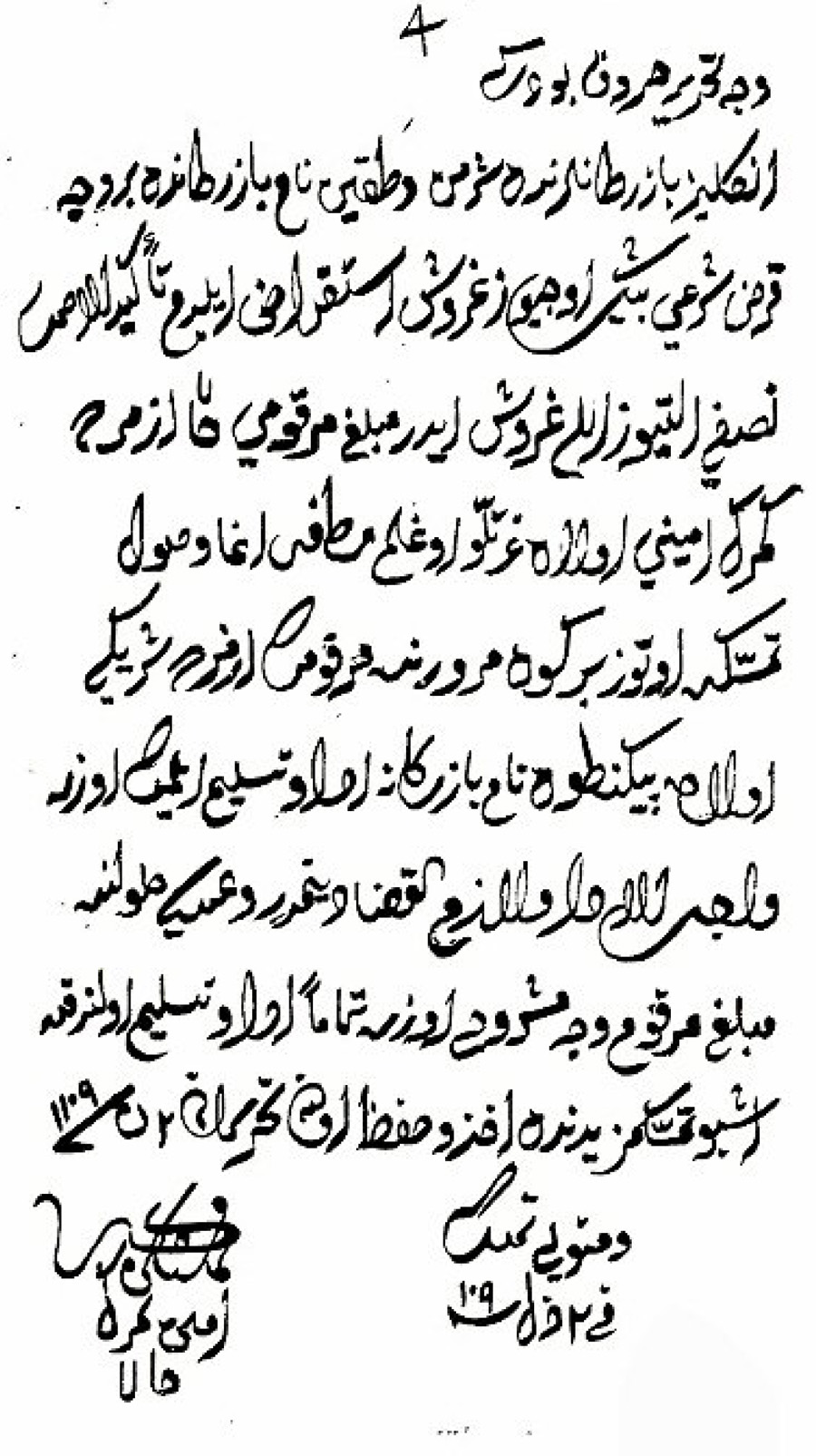
Ephemera
Ottoman bill of exchange from Smyrna in 1698
A bill of exchange is a written order used primarily in international trade that binds one party to pay a fixed sum of money to another party on demand or at a predetermined date. Levantines working in the Ottoman world would have to deal with these almost on a daily basis and there would be translated versions from Ottoman and also when dealing with merchants of other nations, also copies in French and other languages leading to significant but vital paperwork and the whole logistics of storing them securely, in a degree of order and long enough to iron-out future possible issues arising from that transaction and setting of norms of precedence. Before 1825 all Anglo-Ottoman trade was conducted under the strict monopoly of the Levant Company who thus oversaw all the regulations, paperwork, negotiations with both local Ottoman officials and the Sultan through the capitulation treaties that were renewed with each Sultan and also for numerous revisions. The Levant Company also appointed and paid for the Ambassador, Governors, Consuls and Chaplains until 1821 making it a political force as well and this overseas power and influence did not sit well with a gradually liberalising Britain in early 19th century in regards to free trade and also the strict control in Ottoman lands of what the factors (tied merchants) could trade in post the post Napoleonic world made little sense. The biggest rival in the Levant in the 18th century with Britain being France never fully recovered from the twin calamities to its international trade, those being the French revolution and the following Napoleonic wars.
This bill, written in Turkish, with a date that corresponds to 16 April 1698 was reproduced on page 8 of Thomas Vaughan’s A Grammar of the Turkish Language (London, 1709). The author described himself as “Late of Smyrna, Merchant” and dedicated the book to his uncle, George Boddington (family note book).
Thomas was the son of James Vaughan, a merchant of Antigua in the West Indies, who was lieutenant-governor of that island from 1678 to 1680. The name of James’s first wife is not known, but she must have died about 1665 (soon after Thomas was born) for in 1666 he married Elizabeth, an elder sister of George Boddington.
Thomas was a member of the Levant Company’s factory at Smyrna and gained his freedom of the Company by redemption on 15 April 1692. The Court Minutes then described him as a “mere merchant” (i.e. not engaged in retail trade), citizen of London and under 27 years of age. In 1702 he married Anne Boddington (thought to be a younger cousin of George) and settled at Warfield in Berkshire, where he died in 1727.
On pages 9 to 12, of the Grammar Vaughan transliterated the bill and went on to translate and explain it. He said that it involved three English merchants.
SHERMAN. This was probably William Sherman, who was granted Liberty of Trade at Smyrna on 9 September 1685. He and his brother Rowland had been apprenticed to Sir Gabriel Roberts, deputy governor of the Levant Company. William died at Constantinople in 1703. His will mentions his brothers: John in London and Rowland in Aleppo.
WHITCOMB. This was probably Peter Whitcomb or Whitcom, who was admitted to the Freedom of the Levant Company on 31 March 1697.
PILKINGTON. This was probably Edward Pilkington, who was admitted to the Freedom of the Levant Company on 13 September 1699.
The motives for why Thomas Vaughan went to the considerable trouble involved in publishing this book remain lost in history but perhaps he wanted to provide future factors and British officials a guide in helping to acquaint them to a degree of the complexities of a very alien language and difficult script to master. We could speculate there was a need for this as European merchants who had local language skills (Greek and Arabic would have also been high in terms of usefulness) would have had a slight edge in building personal rapports with locals as opposed to those who had to rely exclusively on the intermediary dragoman interpreters.
Image and information courtesy of David Wilson, 2021.

